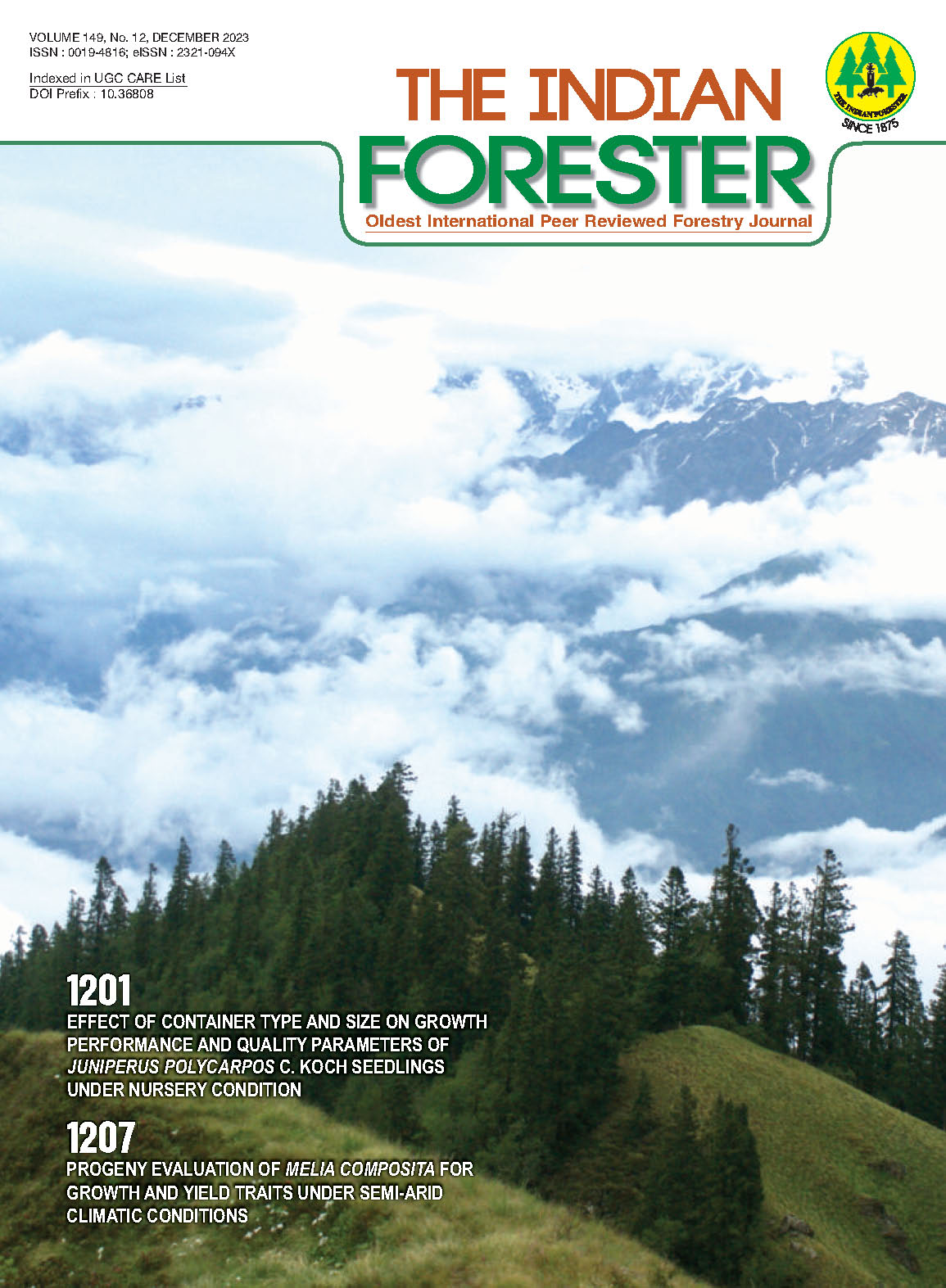TCF Bleaching of Eucalyptus tereticornis Kraft Pulps by MILOX Process
DOI:
https://doi.org/10.36808/if/2023/v149i12/169852Keywords:
Eucalpytus tereticornis, Karft Pulps, Peroxyacids Bleaching, Formic Acid, MILOX and Physical Properties.Abstract
Conventional bleaching of kraft pulps needs chlorine or chlorine chemicals to obtain full brightness. Peroxy compounds are effective delignification agents and can use in chemical pulp bleaching. According to the literature, peroxy acids are reactive and selective in reaction with lignin. The residual lignin reactivity towards hydrogen peroxide (P) bleaching was significantly increased by the pretreatment of peroxy acid. The three different bleaching sequences such as (PFA)P, (PFA)PP, and (PFA)PAP were developed for the bleaching of unbleached kraft pulp. The sequences are based on pretreatment using peroxy formic acid (PFA) that makes the residual lignin of pulp more susceptible to attack by hydrogen peroxide. Sequential bleaching with peroxy formic acid followed by alkaline peroxide alone in one or two stages or separately by acid treatment produced bleached pulp with 82.42; 85.30 % ISO brightness and good properties. The strength properties of bleached pulp are tested and compared with the CEHH sequence in conventional bleaching and oxygen pre-bleaching, OCEH sequence. The results obtained from the bleached pulp by the MILOX method are similar to CEHH and OCEH bleaching sequences. The results are thoroughly discussed in the study.References
Association A.P.H., Association A.W.W. and Federation W.E. (1998). Standard methods for the examination of water and wastewater. In TA-TT - (20th ed). APHA-AWWA-WEF. https://doi.org/ LK - https://worldcat.org/title/779509419.
Bajpai P. (2005). Environmentally benign approaches for pulp bleaching in Developments in Environmental Management, Elsevier, Amsterdam, The Netherlands, 1st edition, 2005.
Chukwudebelu J.A. and Agunwamba J.C. (2017). Comparison of solids in effluent from pulping kenaf stem with formic acid and sodium hydroxide. 11(March), 132-138. https://doi.org/10.5897/AJEST2016.2205
Esteves C.V.G., Sevastyanova O., Östlund S. and Brännvall E. (2022). The impact of bleaching on the yield of softwood kraft pulps obtained by high alkali impregnation Bleaching and high alkali impregnation impact. Nordic Pulp and Paper Research Journal, 37(4): 593-608. https://doi.org/10.1515/npprj-2022-0035
Gierer J. (1986). Chemistry of delignification. 2. Reactions of lignins during bleaching. Wood Science and Technology, 20(1): 1—33. https://doi.org/10.1007/bf00350692
Gierer J. (1982). The Chemistry of Delignification. A General Concept, 36(1): 43-51. https://doi.org/10.1515/hfsg.1982.36.1.43
Jahan M.S. (2006). Formic Acid Pulping of Bagasse. 41: 245-250.
Kishimoto T., Kadla J.F., Chang H. -m. and Jameel H. (2003). he Reactions of Lignin Model Compounds with Hydrogen Peroxide at Low pH". 57(1): 52-88. https://doi.org/doi:10.1515/HF.2003.008
Lagan J. (1951). Viscosity Measurements. Martin Equation versus Multi-Point Methods. Durability of Paper and Writing, 74-75.
Mei Y., Kumar A. and Gross R. (2003). Kinetics and Mechanism of. 2: 5530-5536.
Olm L. and Teder A. (1979). The kinetics of oxygen bleaching [softwoods, lignins]. TAPPI [Technical Association of the Pulp and Paper Industry](USA).
Stem K. (2021). Characteristics of Effluent from Formic Acid and Sodium Hydroxide Pulping of Characteristics of Effluent from Formic Acid and Sodium Hydroxide Pulping of Kenaf Stem. September. https://doi.org/10.9734/ajocs/2021/v10i319093
Yigit Y., Kilislioglu A., Karakus S. and Baydogan N. (2019). Determination of the intrinsic viscosity and molecular weight of Poly (methyl methacrylate) blends, 2(2): 0-1.
Downloads
Downloads
Published
How to Cite
Issue
Section
License
Unless otherwise stated, copyright or similar rights in all materials presented on the site, including graphical images, are owned by Indian Forester.





